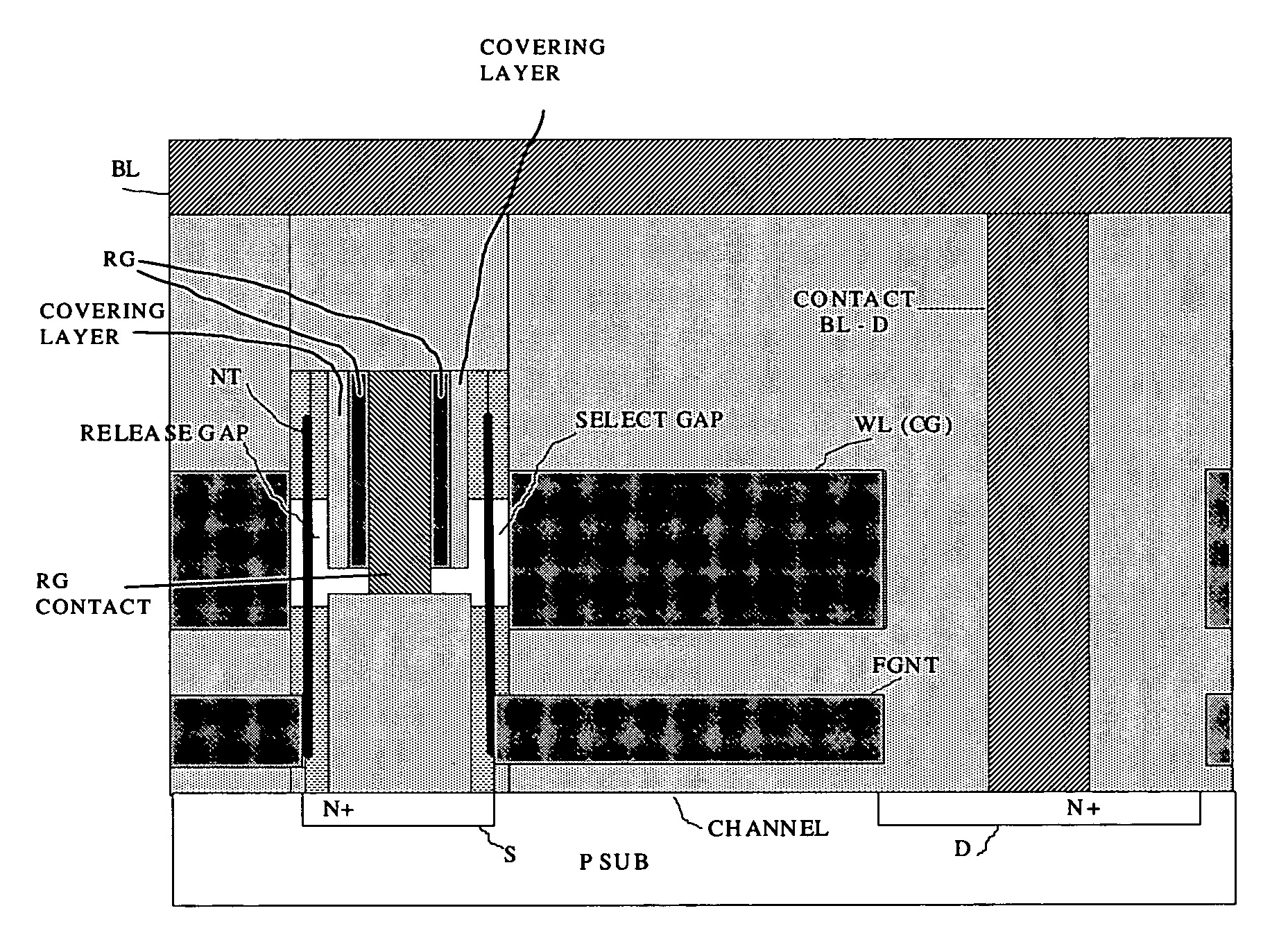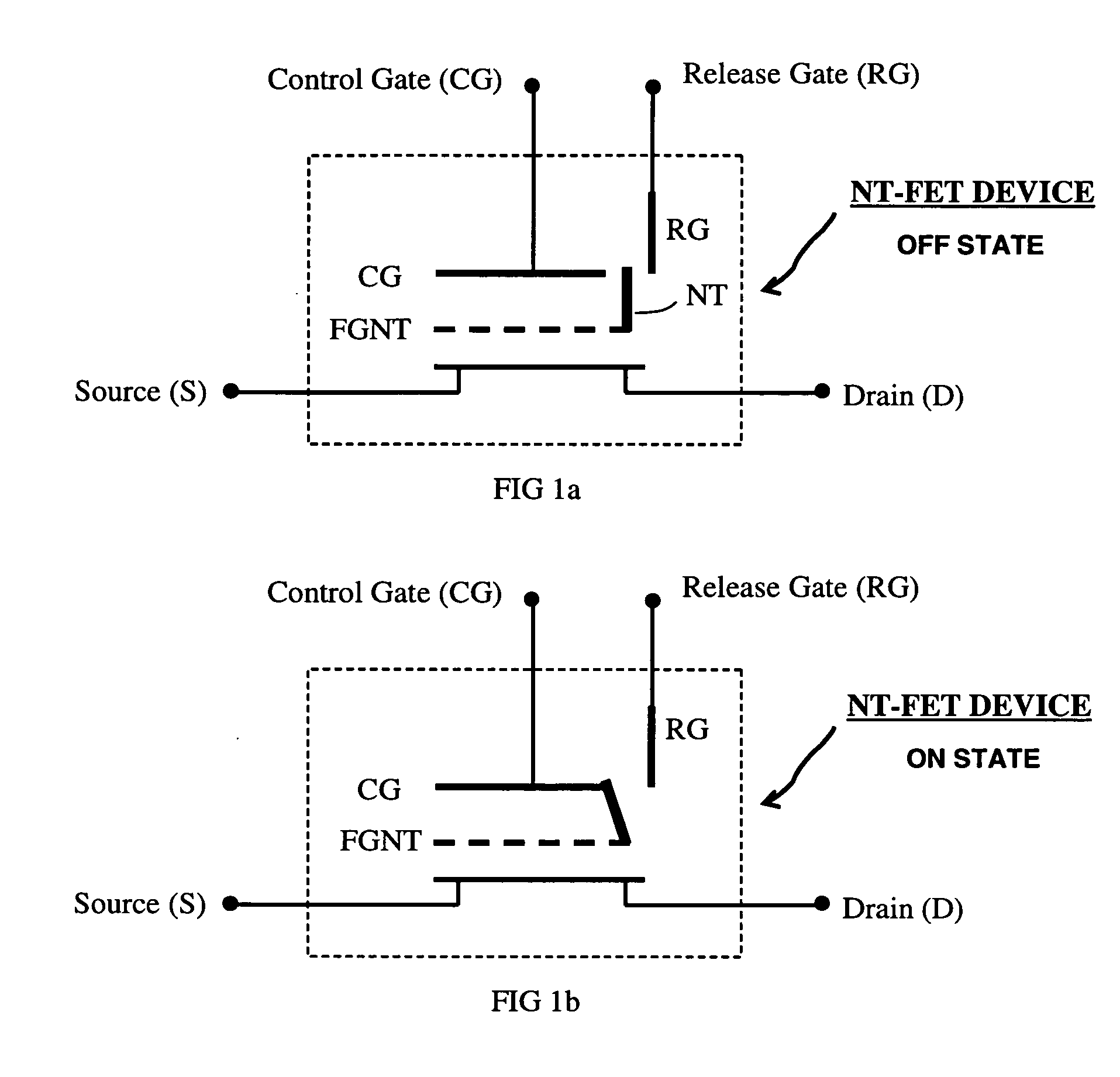Four terminal non-volatile transistor device
- Summary
- Abstract
- Description
- Claims
- Application Information
AI Technical Summary
Benefits of technology
Problems solved by technology
Method used
Image
Examples
Embodiment Construction
[0048] Preferred embodiments of the invention provide a four terminal non-volatile transistor device. These embodiments, in essence, integrate a nanotube (NT) structure (such as a nanofabric article or ribbon) with a FET transistor. In preferred cases, the NT is integrated in such a way that external transistor connections are made only to the FET transistor terminals for deflecting the NT element into contact with the control gate, and the NT is switched internal to the device. The release gate is accessed directly. However, there is no direct contact to the NT element itself. Such a device is referred to as an NT-FET (nanotube-FET) device herein, and its construction and operation are described below.
[0049] The single transistor NT-FET can be used in many applications, for example, an NRAM memory array of very small cell size. When used in such a non-volatile memory array, preferred layout designs occupy less than 8 F2 cell area with bit selectivity for read, release, and write o...
PUM
 Login to View More
Login to View More Abstract
Description
Claims
Application Information
 Login to View More
Login to View More - R&D
- Intellectual Property
- Life Sciences
- Materials
- Tech Scout
- Unparalleled Data Quality
- Higher Quality Content
- 60% Fewer Hallucinations
Browse by: Latest US Patents, China's latest patents, Technical Efficacy Thesaurus, Application Domain, Technology Topic, Popular Technical Reports.
© 2025 PatSnap. All rights reserved.Legal|Privacy policy|Modern Slavery Act Transparency Statement|Sitemap|About US| Contact US: help@patsnap.com



